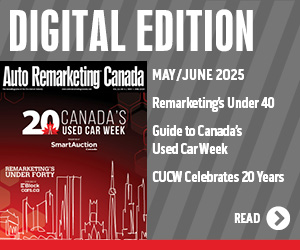3 missed connections facing Canadian dealers

The term “missed connection” is often associated with airport hassles and personal ads in the newspaper (well, maybe on smartphone apps, these days).
But it may also apply to squandered opportunities for dealers to reach car shoppers.
And a new report from Kijiji released Thursday suggests there are three key “missed connections” between consumers and dealerships during the car-shopping process.
The wide-ranging report touches on everything from digital versus traditional advertising and generational differences, to follow-up techniques and pressure-free sales environments.
But in recapping the Kijiji Autos Research Report, the company hammers home how to “connect the disconnected” and reduce those missed opportunities.
Over-emphasis on social?
For starters, social media might not have as big an influence on dealership choice as perceived by dealers. The study found that dealers believe that advertising on social media and doing so on their own websites have the same return on investment.
However, dealership websites were the most used online car-research resource (58 percent), while social media was eighth (11 percent).
Online classifieds and OEM sites (both at 40 percent) followed dealer websites, with search (29 percent) and auto review sites (26 percent) next on the list. Consumer-driven reports (19 percent) and other automotive sites (13 percent) followed.
After social media were car enthusiast blogs (8 percent) and email newsletters (4 percent).
Not only was social eighth out of 10 in terms of digital resource usage, it was also only the 10th most influential out of 19 factors for dealership visit decision, Kijiji found.
“Canadian car shoppers use a variety of resources to aid in their research and some are more influential than others when it comes to choosing which dealership to visit,” the company said in the report.
“Usage of social media during the research process plays a relatively small part, both in dealership choice and in research overall — a percentage that dealers might find surprising.”
It later adds: “Here’s the missed connection: while just as many dealers say they advertise via social media as leverage their own website, the website will receive significantly more attention from consumers.”
Not that social media is a negative. Kijiji notes: “This report doesn’t set out to imply that social media or mobile advertising are not important channels and that dealers shouldn’t invest in them, but it is worth considering the level of investment in social media as a resource compared to others.
“Channels such as dealership sites and online classifieds sites will have significantly higher influence over a car shopper’s choice of dealership, as indicated by car shoppers themselves.”
Transparency needed for trust
By an overwhelming margin, dealers understand the importance of being transparent. But a lack of transparency in certain key pieces of the vehicle sales process could be hurting them.
For instance, price.
According to the annual Kijiji Dealer Pulse Study, 92 percent of dealers find transparent pricing to be vital.
However, Kijiji’s Consumer Insights Study found that just 52 percent of dealers always include the total price with their ads. And total price topped the list of most important factors consumers are weighing.
Likewise, the second-most important factor that shoppers consider before visiting a dealership, fuel efficiency, saw similar numbers. Just 50 percent of dealers always list this value in their ads.
In the full research report, Kijiji said the missed connection is that “top details that customers need to know about a vehicle are only sometimes — and often never —included in dealer ads.”
The report goes on to add: “And when it comes to total price, over one third of dealers never include it, opening the opportunity to be ruled out during the consumer’s crucial research step of deciding on a dealership to visit.
“All things considered, transparent advertising is a simple and straightforward way of demonstrating trust to Canadians during the research and selection process.”
Generation confusion?
Do dealers have the wrong idea about older Gen X'ers and Baby Boomers? Perhaps.
The study indicated that 47 percent of dealers believe their business will be negatively affected by an aging population, but in reality, the 55-and-up crowd could mean opportunity for dealers.
For instance, nearly two-fifths (38 percent) of age 55-plus car-shoppers bought or leased a new vehicle simply because they wanted a newer model.
Kijiji points out that “older Canadians display many signals throughout the car shopping journey that may prove to be a very positive influence on dealer success, such as purchasing for want versus need,” and they also shown more signs of confidence about car shopping.
The study found that among shoppers 55 and up, 27 percent were relaxed at the dealership and 25 percent expressed confidence. The numbers for 18- to 34-year-olds (15 percent, 17 percent, respectively) were lower.
The younger crowd was also more likely to feel anxious (15 percent) or excited (35 percent) than the older crowd (4 percent, 21 percent, respectively).
“Where there’s a missed connection: older Canadians display many signals throughout the car shopping journey that may prove to be a very positive influence on dealer success,” the study notes.


